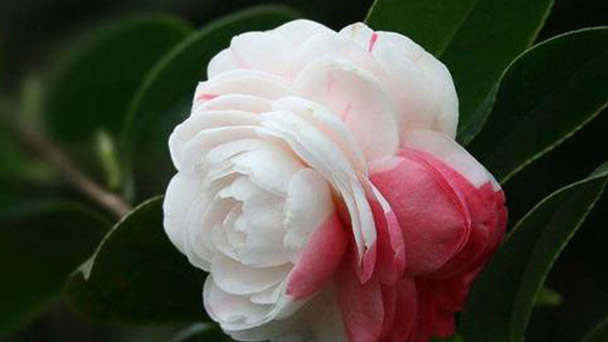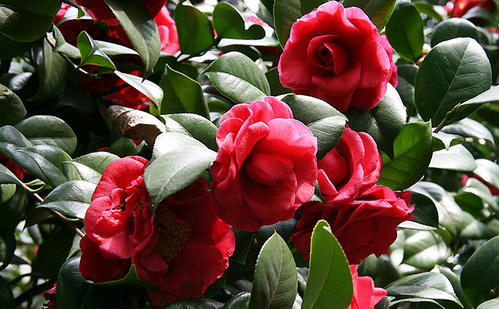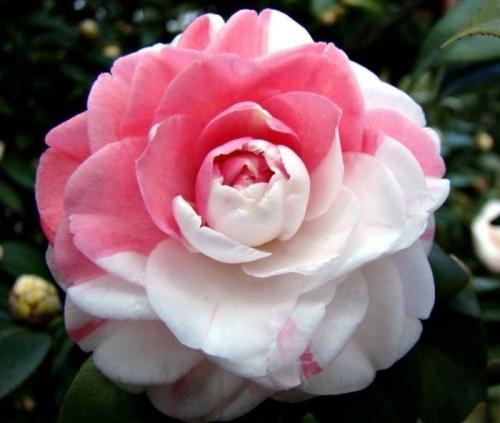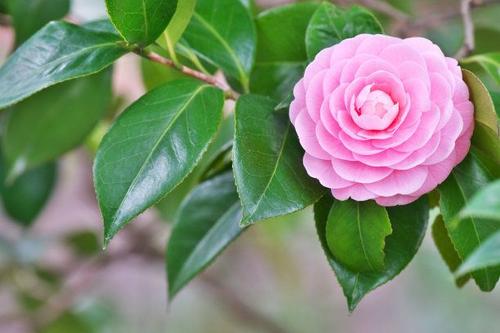How to take care of Japanese Camellia plant
Written by Maggie
Jan 07 2021

Many flower lovers became fascinated by Japanese Camellia when they first saw it because it was so amazing! So I went home to plant Japanese Camellia, but it wasn't as beautiful as I thought. There were even many Japanese camellia that were crooked and leaves blackening. How to take care of Japanese Camellia plants? Let's learn together!

How to take care of Japanese Camellia plant being long and crooked
A flower friend recently said that she received a new mountain japanese camellia today, but the tree shape is crooked. How to take care of Japanese Camellia plants being long and crooked? The following are solutions.
1. Soft paper correction
Choose small clamps with less power (bamboo clamps used for drying clothes), pad soft paper at the jaws of the clamps, and directly pull the two symmetrical blades together and clamp them together. After a period of time it will become straight.
2. Pay attention to the orientation of Japanese Camellia
Japanese Camellia can be avoided by pointing the top of the leaf north and south and rotating the pot regularly. Because plants have phototaxis. If placed indoors no matter how fixed, plants will grow to the direction of the window with sunlight. If it is placed outside, the full sunlight will not be slanted.
3. When changing soil, it is not too high
Make the hole under the pot as large as possible. If it is too small, make the hole as large as 2cm, cover the tile, put the coarse pottery 2 to 4cm, put the Japanese Camellia right on the pot, then add the new earth as soon as it is full, then gently lift the pot and shake the pot so that the earth and the root are in close contact, the earth should not be higher than the original root neck. Don't add new soil on top of your camellia, which will allow you to breathe. If you add new soil on top of your camellia, it will not grow easily. Add the soil 3 to 5 cm (depending on the size of the pot) away from the pot, and don't over fill it.
Through the above summary we all know how to take care of Japanese Camellia plants being long and crooked, and how to prevent Japanese camellia long and crooked, hope flower friends can raise a beautiful Japanese camellia!

How to take care of Japanese camellia leaves blackening
Japanese camellia have a beautiful gesture, are widespread and are deeply loved by people, and are suitable to put in the home decoration or sitting room, doorway, so many flowers friends at home are holding their own Japanese camellia. How to take care of Japanese camellia leaves blackening? The following are solutions.
My Japanese Camellia has been growing it for a year and has been doing well, a friend recently said. Now the bone buds grow especially well, but I don't know why these days, most of the leaves edge black, black gradually more leaves fall. Japanese Camellia usually does not lose its leaves, so now I am particularly worried. What causes the Japanese Camellia leaf to go black?
It is rare to see Japanese camellia leaves turn black, usually due to anthrax (the leaves look charred). You should remove all the blackened leaves and burn them uniformly. Anthrax in plants is usually not as dangerous as anthrax in animals, and in most cases the disease can be controlled simply by cutting off the source of transmission.
What causes the Japanese Camellia leaf to go black? The withered leaves of Japanese Camellia were mostly caused by disease and insects. When the Japanese camellia shoots become brown and spread, water is blocked from reaching the top of the shoot, turning from green to yellow, and eventually dying, the diseased branch dies. In the event of Japanese camellia, cut off the diseased branches and burn them.
The plants should be sprayed with sterilizing agents, such as carbendazim and topsyn, etc., together to strengthen common maintenance, enhance plant resistance, and avoid the re-damage of bacteria. If the Japanese camellia shoots are found to have stopped growing, yellowing leaves and dying shoots, it can be determined that the tea tip moth is damaging the Japanese camellia. The young moth of the tea shoot moth eats the person to carry after summer. Up to the top bud can be carried, resulting in a hollow soft tip water loss and death. Some branches die, but also stop growing, the leaves wilted yellow. After the tea shoot moths have eaten the young shoots, the young shoots must be cut off and burned to kill pests.
Prevention methods:
1. Remove diseased leaves from the base.
2. Cut off disease branches.
3. Before the onset of the disease, 1 {bf} Bordeaux mixture should be sprayed every half a month.
4. Spray once a week with 600 times chlorothalonil aqueous solution and spray continuously for 3 to 4 times.
5. Strong cultivation management, scientific weeding and fertilization.In spring, phosphorus and potash fertilizer can be increased, and 0.15 {bf} aqueous solution of potassium dihydrogen phosphate can be sprayed on the leaves before they are expanded.
We all know why Japanese Camellia leaves turn black and how to deal with it. I hope you can cultivate beautiful Japanese Camellia!

Latest Updated
- Benefits of Bugleweed - 7 Science-backed Health Benefits
- Bugleweed Dangers & Side Effects - Is It Poisonous?
- How to Plant Evergreen Trees - What You Should Know
- When to Plant Evergreens - Grow Guide for Evergreen Trees
- 12 Wonderful Evergreen Shrubs for Your Garden
- 12 Popular Evergreen Plants with Pictures for Beginners
- When And How To Prune A Lilac Bush Like a Pro
- How to Grow & Care for Lilac Vine (Hardenbergia Violacea)
- Japanese Lilac Tree (Syringa Reticulata) Care & Propagation Guide
- Shumard Oak Pros and Cons - What to Know
Popular Articles
- Winter maintenance of Antirrhinum Majus
- How to Grow Terminalia Mantaly Tree
- How to Grow and Care for Crossostephium Chinense
- How to grow Antirrhinum Majus in spring
- Peristeria Elata (Dove Orchid) Profile: Info & Care Guide
- Underwatered Snake Plant (Sansevieria Trifasciata) - Signs And How To Fix
- How to Care for Brazilian Jasmine Plant (Mandevilla Sanderi)
- How to Grow & Care for Graptopetalum Purple Delight in Summer
- Rosa Chinensis (China Rose): Plant Growing & Care Tips
- How to Care for Baby Sun Rose (Aptenia Cordifolia)